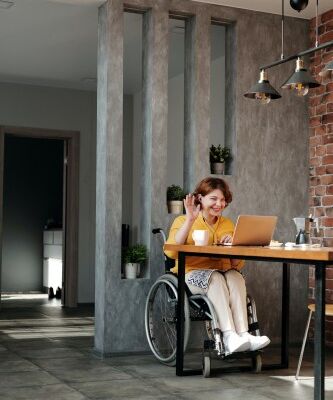When you make a personal injury claim, the money that you are awarded is intended to compensate you for the effect that your injury has had on your day-to-day life.
This award is made up of three components:
- General damages – compensation for the physical or psychological injuries that you have sustained
- Special damages – compensation for the financial losses that you have incurred such as the cost of medical treatment or loss of earnings as a result of your injuries
- Loss of amenity – compensation for the limitations on your lifestyle due to the injury This article focuses on loss of amenity.
Loss of amenity can be difficult to quantify and relies on you being able to provide evidence of how the injury has impacted you on a day-to-day basis. It is important, therefore, that you try to collect as much evidence as possible.
Loss of amenity meaning
The meaning of ‘loss of amenity’ relates to the loss in your quality of life and lifestyle changes that you have had to endure as a result of your injuries. The process involves attributing a financial value to non-financial suffering that you have endured. This is why it can be so difficult to quantify.
Examples of loss of amenity cases
The best way to be able to prove loss of amenity in a personal injury case is to be able to give examples with evidence of how your lifestyle has been affected by the injury that you have sustained.
Some examples include:
- A person who has suffered hearing damage through their work and can now no longer play in their band
- A person who has lost a digit through a car accident and can no longer communicate with their friends on a mobile phone or social media
- A person who injured their back in a shop accident and can no longer play football regularly
- A parent who has suffered from whiplash in a car accident and can no longer support their children in extra-curricular activities
How is the loss of amenity calculated?
Quantifying loss of amenity is very difficult as usually receipts and medical reports are unable to give precise details about how the injury has affected your lifestyle. It is essential, therefore, that you keep as much evidence of things that you are missing out on, or how things have changed for you as possible.
Presenting evidence of loss of amenity is often tricky and it usually comprises video and photographic evidence of how you have been affected. Sometimes friends and family will also be asked to provide witness statements.
We recommend that you keep a note every time you cannot participate or carry out an activity after your injury that you would have done previously. This is a good place to start when we are trying to prove the impact of your injury on your lifestyle and quality of life.
Contact Waldrons solicitors
Whatever your query, get in touch with us here at Waldrons today.
More information on Personal Injury
Last reviewed on 11/07/23 by Joseph Norton who is a Director and Head of Compensation
